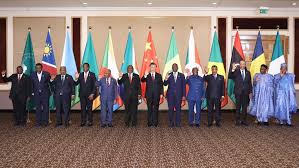As the Belt and Road Initiative (BRI) enters its second decade, Africa remains one of its most important frontiers. Launched by China in 2013, the BRI aims to foster global connectivity through vast infrastructure projects spanning continents. In Africa, the scale and ambition of these projects have been striking, but as we look at 2024, the successes and challenges of China’s investments reveal a complex narrative.
The Successes: Connecting the Continent
China’s BRI has sparked the development of crucial infrastructure across Africa, transforming transportation and energy sectors in particular. As of 2024, Chinese companies have played an essential role in the construction of over 10,000 kilometers of railways, more than 100,000 kilometers of highways, and numerous bridges and ports
Some standout projects include Kenya’s $5 billion Standard Gauge Railway linking Nairobi and Mombasa, which has cut travel time from 10 hours to just 4
Similarly, in Mozambique, the construction of Africa’s longest suspension bridge in Maputo was a game-changer for local transportation, while in Nigeria, the Mambilla Hydroelectric Plant promises to boost the country’s power generation capacity
Moreover, China’s push toward a green agenda within the BRI is notable. Through investments in renewable energy, like wind and solar power, China is helping African nations diversify their energy portfolios. The $533 million expansion of the Kariba Hydroelectric Station in Zimbabwe is one such example
Such projects are expected to help mitigate energy shortages and foster sustainable growth.
Economic Growth and Trade
One of the most remarkable outcomes of the BRI in Africa is the increase in China-Africa trade, which reached a record high of $282.1 billion in 2023
China’s investment stock in Africa has surpassed $40 billion, signifying strong economic ties. The BRI has also stimulated job creation, with local economies benefiting from the construction and operation of Chinese-funded infrastructure.
Challenges and Criticisms: The Struggles
However, the BRI’s footprint in Africa is far from without its issues. While some projects have flourished, others have faced significant setbacks. One notable example is Kenya’s Standard Gauge Railway, which, while operational, has struggled with its financial sustainability. The project’s second phase, meant to extend the line to Uganda and Rwanda, has been delayed due to debt issues
Similarly, in Uganda, the high cost of the Entebbe-Kampala expressway has raised questions about the economic feasibility of some Chinese-financed roads
There are also concerns about the long-term sustainability of some projects. The Addis Ababa light rail, for instance, has faced operational and maintenance difficulties since its opening in 2015
Such projects often struggle to meet expectations, particularly when local governments underestimate the true cost of upkeep and logistics.
Additionally, critics argue that the BRI has contributed to Africa’s rising debt burden, with some countries finding it difficult to repay Chinese loans. While China has made efforts to ease repayment terms, and many African governments willingly enter into these agreements, the weight of debt remains a contentious issue
The Way Forward: Green and Digital Horizons
Looking ahead, China is emphasizing “high-quality” BRI partnerships, focusing on green development and digital innovation. In 2024, both sides have expressed a desire to expand cooperation in healthcare, digital infrastructure, and green projects
With plans for more sustainable initiatives, such as green bonds and the development of smart cities, China’s focus is shifting towards modernizing African economies in a way that is both environmentally and economically viable.
A Shared Future or a Rough Road Ahead?
While the Belt and Road Initiative has indeed fostered significant infrastructure development across Africa, its long-term impact will depend on how these projects evolve in terms of sustainability and financial viability. The growing emphasis on technology and green energy points to a more balanced approach that could benefit both China and its African partners in the years to come. But for now, the road remains a mix of opportunity and challenge—one that will require careful navigation by both sides as they look to build a truly connected, prosperous future.




